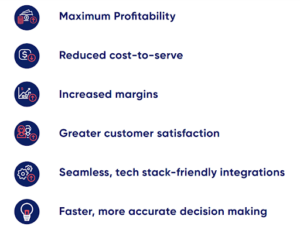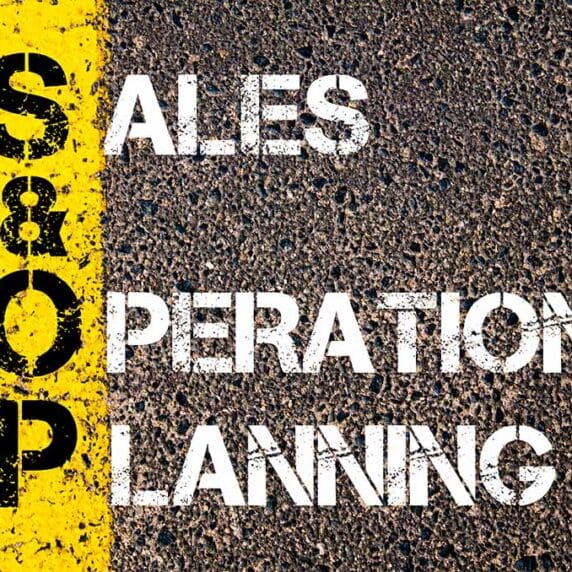Fulfill.io 101: Why and How to Optimize Your Retail Fulfillment Process
Retailers have a lot to juggle, looking to combine cost-efficiency with elevated consumer satisfaction so they can remain competitive in the current retail marketplace.
An effective fulfillment process can make or break a retailer’s bottom line, but with expanding channels, heightened customer expectations, and the inherently fast pace of the retail industry, many companies are under-equipped in terms of technology.
The good news is retail fulfillment offers enormous opportunities for improved margins, greater efficiency, and happier customers.
That’s why we’re excited to announce this blog series on Fulfill.io 101.
Introducing Fulfill.io
Fulfill.io is the latest and most effective fulfillment strategy and tool available, capable of analyzing real-time data and assessing multiple factors concurrently to find the best possible fulfillment option. This simultaneous optimization happens all in subseconds – and all seamlessly integrated with existing tech stacks.
By the end of this three-part blog series, you’ll be able to:
- Spot the pitfalls of traditional approaches and understand the benefits of groundbreaking Fulfill.io solutions
- Identify the three factors retailers need to consider when optimizing their fulfillment decisions
- Understand how Fulfill.io brings all these components together and helps real-world companies achieve fulfillment optimization that minimizes cost while achieving customer SLAs
In this post, we’ll set the stage, outlining today’s challenges, how traditional approaches hamper efficiency, and the benefits to be gained with the Fulfill.io solution.
Welcome to Fulfill.io 101. Let’s dive in!
Today’s Top Three Fulfillment Challenges
It’s important to know what you’re up against when you begin fulfilling from stores or trying to coordinate inter-store transfers.
Here’s what many modern retailers are facing with the advent of fulfillment challenges like ship-from-store programs.
- Broader Fulfillment Networks: By converting stores into fulfillment centers, your fulfillment network expands exponentially in an instant. Suddenly, you have a lot more options and a lot more moving parts, adding to operational complexity.
- Solving for Multiple Objectives: What are your top goals? Perhaps reducing shipping costs? Not a bad idea. But it’s not your only business objective, is it? What about labor costs, customer SLAs, markdown avoidance? Traditional approaches can’t balance all of these considerations.
- Store Fulfillment Variability: Store inventory can get…complicated. Unlike warehouses, with their neatly-stacked, precisely-scanned boxes, store inventory is inherently more variable, especially considering the varying sell-through rates across locations and seasons.
How Traditional Fulfillment Methods Fall Short
So you’re looking at more complicated fulfillment networks, conflicting objectives, and the variance across store inventory.
No worries, you can just use the logic built into your OMS, right?
Well, there are a few shortcomings in traditional OMS sourcing logic.
- Sequential Rules: With a rules-based approach, each rule acts as a filter, narrowing options down until the final fulfillment location is selected. This means only locations that meet the criteria at a single point in the sequence can be selected. Options that have already been filtered out can’t be considered against future, competing factors.
- One-at-a-Time Logic: Traditional logic only solves for a single objective at a time. It can’t support multiple goals at once, requiring you to pick one priority instead of being able to balance the demands of different objectives.
- Limited Scalability: Traditional logic was often built for companies with a smaller web of centralized fulfillment centers. It simply can’t handle the rapid growth of modern retail fulfillment networks, meaning retailers miss out on scale and speed.
So what’s the solution?
A New Approach: The Three Characteristics of Fulfill.io
Fulfill.io is unique in its cost-based approach that allows retailers to weigh multiple considerations concurrently to identify the lowest cost-to-serve fulfillment option that meets customer expectations.
It evaluates aspects such as shipping, labor, and potential markdowns, making it easier for retailers to make informed and balanced fulfillment decisions.
It tells you when and from where to fulfill each individual order.
So, you don’t have to worry about your system’s logic having tunnel vision and optimizing for minimal shipments at the cost of customer SLAs. It weighs all the factors, in real-time and in subseconds, and determines the best option.
Plus, this system-agnostic solution integrates flawlessly with any existing order management system, offering a seamless experience. It automates behind-the-scenes processes, ensuring every fulfillment decision is optimal and enhancing overall operational efficiency and adaptability.
How does Fulfill.io help retailers reduce shipping costs and improve margins?
The Three Key Characteristics of Fulfill.io
So what makes the dynamic approach different from traditional methods?
Let’s look at the top three characteristics of this solution.
- Comprehensive: Fulfill.io predicts the fulfillment outcomes that minimize the total cost-to-serve while meeting both business and customer objectives.
- Extensive: It estimates the cost to serve and operational behavior, using this information to predict the actual, total cost to fulfill an order.
- Exponential: It evaluates every permutation across thousands of possibilities, providing optimal recommendations at web-speed.
We’ll dive more deeply into how Fulfill.io achieves all of this in next week’s blog post, but for now, let’s answer the question: What’s the payoff?
The Benefits of Fulfill.io
An effective fulfillment process, powered by the right methodology and the right technology, proves why so many companies want to initiate omnichannel programs in the first place.
Here’s a look at some of the benefits:
In fact, companies like Zumiez and Belk have been using the Fulfill.io functionalities for years and reaping the enormous cost savings and efficiency gains that come with it.
The Takeaways
So now, we’ve established some of the basics.
Traditional fulfillment logic doesn’t have the horsepower retailers need to truly optimize their fulfillment. They need a solution that can assess real-time data, handle complex networks, and keep pace with constantly fluctuating fulfillment demands.
And how does Fulfill.io achieve that?
In part two of this blog series, we’ll dig into Fulfill.io’s unique cost-based optimization and the three components Fulfill.io evaluates to determine the optimal fulfillment decision for each order.
Can’t wait to learn more?
Discover how cost-based fulfillment harnesses real-time optimization and helps retailers like Zumiez and Torrid best leverage available inventory for maximum efficiency, profitability, and customer satisfaction.







